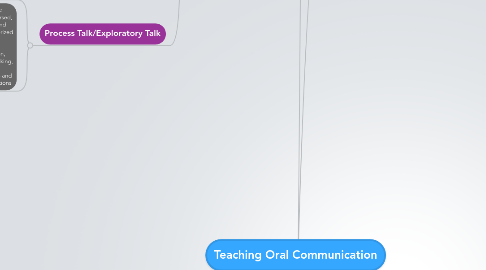
1. Interpretation Teaching
1.1. Criticisms
1.1.1. 1. Lack of Explicit Teaching
1.1.2. 2. Disadvantage for students less familiar with the language.
1.2. emphasis on interactive and cognitive process
1.3. Teacher and children engage with information
1.4. Children interpret and actively evaluate information.
1.5. Teacher manages the appropriate learning experiences.
1.6. Interactive Discourse is crucial
1.6.1. Vygotsky
1.6.1.1. Learning takes place in social environment by interacting with More-Knowledgeable-Others.
1.6.1.2. Zone of Proximal Development
1.6.2. Bruner
1.6.2.1. Scaffolding: 'novices' to undertake tasks they would be unable to do independently and unaided.
1.6.2.2. Learning through problem-solving, that is done in a social context
1.6.2.2.1. Children make sense of new ideas/concepts through the process of talking
1.6.3. Open questions facilitate interactive discourse
1.7. Process Talk/Exploratory Talk
1.7.1. Students articulate their thoughts and ideas.
1.7.2. Features: unrehearsed, untidy and characterized by false starts, repetition, backtracking, pauses, overlaps and interruptions
2. Transmission Model
2.1. Criticisms
2.1.1. 1. a curriculum sited solely within the dominant culture.
2.1.2. 2. Work against using language in interaction with others.
